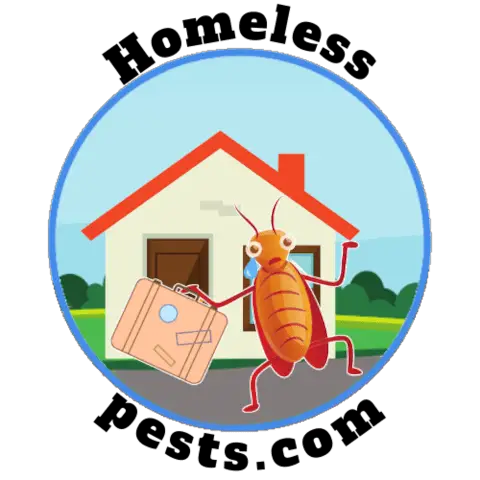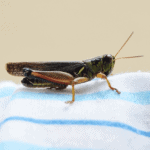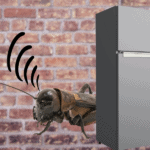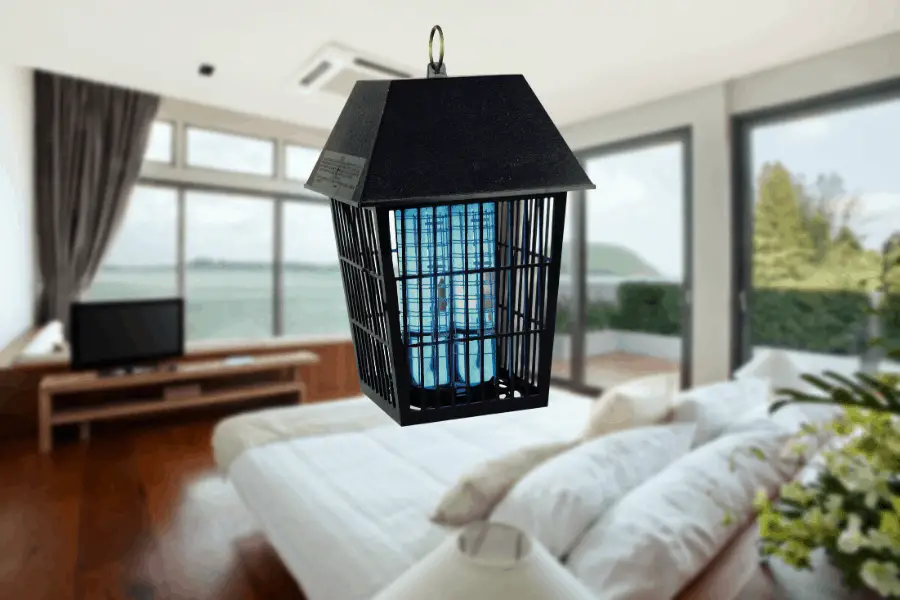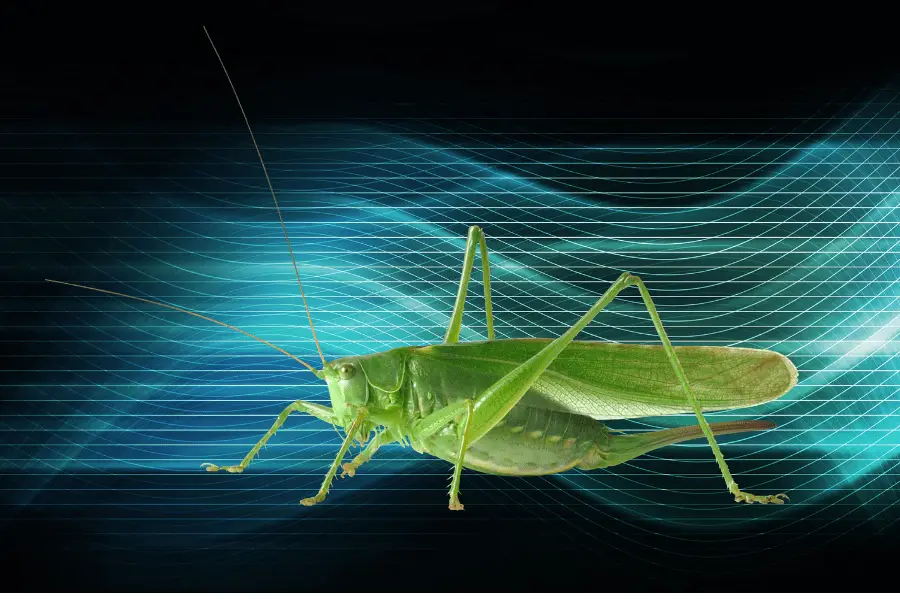
Ultrasonic pest repellers are often marketed as an environmentally friendly, cost-effective way to keep pests like crickets off your property. But does it really work?
To answer this question, I will look at some of the research that has been conducted on whether these products actually work and what they do exactly.
Research shows that crickets do respond to ultrasonic sound and will be deterred. However, not all ultrasonic devices are equally effective and the results are neither immediate nor universally effective. Using an ultrasonic repeller is most efficient as part of a cricket pest control plan.
Unfortunately, it’s not as easy as popping to the store and picking up an ultrasonic pest control unit. You need to know a little more about it, so that’s why I’ve gone into as much detail as possible in the following article.
How does an ultrasonic pest repeller work?
An ultrasonic pest control device works by producing sound inaudible to the human ear. These devices generate high-frequency waves that are called ultrasonic or ultrasound, which is greater than 20kHz and lower than what can be heard by humans (20Hz – 20kHz).
The frequencies generated by an ultrasonic pest repeller range from 25 kHz to 60 kHz on average. This is loud enough to disturb most insects, including crickets.
This level is so loud because there’s no risk of harming any living creature on earth with these vibrations as they’re way above what we hear and below what bats use for echolocation!
Pesky pests will feel threatened when they detect sounds like this and usually scurry away en masse.
As you want to provide an ultrasonic barrier to your home, it’s best to place these pest control devices in strategic places around the home. Entranceways are key, as are the rooms which are connected to your yard
In this way, it’s possible to create an ultrasonic fort around your home that keeps crickets outside.

Is an ultrasonic pest repeller harmful to humans?
Prolonged exposure of high inaudible frequencies (20–50kHz) is thought to be harmful to us. Many modern devices now use ultrasonic sound in their functionality, including pest repellers. Short-term use is unlikely to lead to major damage, although research is yet to confirm this.
The fact of the matter is that ultrasonic sound doesn’t only have disruptive properties on living organisms, it can have physical effects which lead to death. Of course, we are not describing the ranges that your ultrasonic pest controller is operating at.
Without hard evidence and medical warnings, it’s best to be cautious with ultrasonic sound devices. Use them, but don’t overuse them.
I would recommend that you turn the device on when you aren’t in the home and if it is on, don’t hang out in the room for extended periods of time. Best to be safe than sorry.
Is it worth using them if they could potentially damage your hearing?
Well, yes, I think it is.
Anecdotally, I can say that ultrasonic pest repellers work on crickets. There is also clear scientific research to back this up. When you get up to 50kHz the sound waves are strong enough to make these pests want to skedaddle.
Can I use an Ultrasonic pest repeller with pets in the home?
Most domestic pets, such as cats and dogs, will hear these ultrasonic repeller frequencies so it’s probably not recommended to use one with a pet in the home. It shouldn’t physically harm them, but it may lead to them becoming uncomfortable and even disruptive.
Cats have a very wide hearing range (48–85,000 Hz on average) and some can hear ranges up to 100,000 Hz. The typical hearing range for our canine friends is around 67–64,000 Hz. This is easily in the range of your average ultrasonic pest control device.
For that reason, it wouldn’t be a good idea to use one when your pests are in the house. That doesn’t mean you can have one turned on when everyone isn’t home or when you go on vacation. You could also install an ultrasonic pest control unit in your yard or on your property, and turn it off when you take the dog for a stroll.
Will ultrasonic pest repellers work on all pests?
Although ultrasonic sound waves can be heard by many common household pests, they aren’t effective against all of them. Most insects seem to be affected by high frequencies, but not pests such as mosquitoes. Older designs of ultrasonic devices may also be ineffective against rodents as well.
The issue here is that there hasn’t been any ground-breaking research to show that ultrasonic sound can get rid of pests outright. There is evidence, as I’ve stated, that shows it does affect behavior, but not that it will rid a home of all pests in minutes.
The truth is that some studies have found that, especially for rodents, the effects of ultrasonic sound can be short-lived. Whereas other studies just don’t support the current manufacturer’s claims, at least for all common pests.
There is even the fact that the New York Attorney’s office sent a cease and desist letter to one manufacturer of an anti*mosquito ultrasonic device as there was zero evidence it worked and may have in fact attracted more mosquitoes.
However, this doesn’t mean that these devices cannot and never will work, it may just mean they are only effective against certain pests, such as crickets.
Why are there crickets in my house?
The reason why crickets are attracted to human habitation is because they need sources of food, water, and shelter. Crickets are attracted to moist environments in which their eggs can hatch so making sure your house is dry enough will deter them from entering.
You are most likely to find crickets in your bedroom, just because of those lovely master bathrooms we have all got. They will also be found in living rooms and kitchens which are often damp or moist environments, especially the latter.
If you find crickets inside your home it is important to prevent any more from entering as they can eat through paper, books, clothes, furniture – even carpets!
Are crickets dangerous?
Crickets are by no means dangerous and actually don’t pose much of a threat to human health. However, they can induce sleep deprivation due to their chirping which in itself could be extremely harmful. Lack of sleep can lead to accidents and even certain psychological conditions.
Since crickets are not dangerous, the best way to get rid of them is by using an ultrasonic pest repeller. The ultrasonic waves emitted by the pest repeller will effectively repel any crickets from your home. Ultrasonic pests can be effective indoors as well as outdoors. And you’ll find that they’re also surprisingly potent at keeping out other insects too-including ants and roaches!
Crickets are generally harmless insects unless you have them inside your clothes, which they will much on, or your backyard, where they will find lots of tasty plants.
How long will a cricket live in my house?
The lifespan of a cricket will vary depending on the temperature, food, and living conditions. Crickets can live for up to two months in your home!
So, if they are already starting to affect your sleep pattern, it’s time to take action. But of course, that’s just one cricket. Remember that the female cricket lays up to 200 eggs at once, so with the right conditions, you could play host to crickets for significantly longer than just a few months.
How do you get rid of a cricket infestation?
In addition to using an ultrasonic pest repeller, there are other ways you can get rid of a resident cricket infestation.
You could try to seal up cracks in your home and install weatherstripping around doors or windows. Simply removing the food source can be helpful as well, there’s nothing like starving a cricket! In your yard, crickets are on the lookout for delicious plants such as corn, grass, barley, fruits, or vegetables.
In addition to limiting their food (which they probably won’t find within the home), you can also keep your lawn well-trimmed. This is because long grass is the perfect nesting site for crickets.
If you’re just not having any luck with those methods, it may be time to turn on that ultrasonic pest repeller. Remember that insects have sensitive hearing so an ultrasonic sound will likely bother them more than other noises such as a vacuum cleaner running or music playing from the radio.
Another popular method is using Borax which has been found by some sources as being effective against crickets living near food stores or kitchens – but not inside them! You may want to try this if you’ve noticed an infestation around your kitchen countertops. Just sprinkle borax over any surfaces where crickets are congregating and leave it to work its magic.
Best DIY Cricket products
Here are my suggested products for trapping and dealing with a cricket infestation in your home without the professional price tag. You can buy all of these products in your local hardware store, or you can follow the provided links to buy them on Amazon.
Catchmaster Cricket XL

Here is the link to this product on Amazon.
Ortho Home Defense Max Indoor Insect Barrier

Here is the link to this product on Amazon.
Premium – 99% Pure Boric Acid Powder

Here is the link to this product on Amazon.
You can also read my full article on using boric acid on crickets here.
Delta Dust Multi Use Pest Control Insecticide

Here is the link to this product on Amazon.
Diaotec Ultrasonic Pest Repeller

Here is the link to this product on Amazon.
What kills crickets instantly?
Apart from swatting them flat, the quickest way to kill a cricket is a sticky trap or using Diatomaceous Earth. This is a microscopically razor-sharp material made from the fossilized remains of algae. When pest crawl over it, the Diatomaceous Earth rips open their bodies. This makes retaining moisture impossible and the insect will die from hydration.
How do you stop crickets from chirping?
The incessant noise crickets make can be stopped within the home by lowering the temperature. Crickets thrive at temperatures of 80-90 °F, so lowering the thermostat can be enough to silence them. However, this is an environmentally costly method and other more permanent mesaures need to be taken.
This method won’t help you with garden crickets, and in this case, you can use traps or an ultrasonic repeller to try and move the crickets away from your backyard.
If you want fresh eggs and have space, you can also get some chickens which will eat a wide variety of bugs from crickets to centipedes. This is a really natural way to shut crickets up (for good)!

